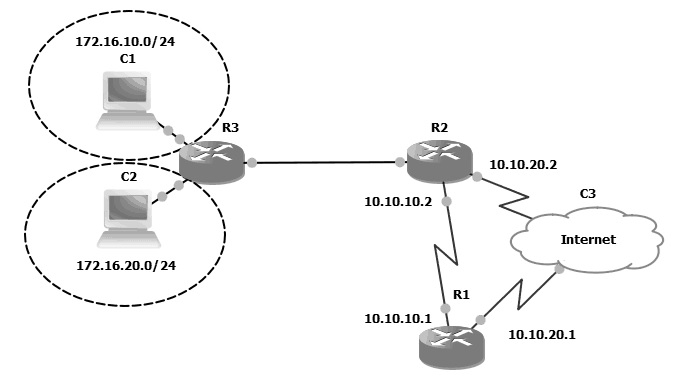
 Data Structure
Data Structure Networking
Networking RDBMS
RDBMS Operating System
Operating System Java
Java MS Excel
MS Excel iOS
iOS HTML
HTML CSS
CSS Android
Android Python
Python C Programming
C Programming C++
C++ C#
C# MongoDB
MongoDB MySQL
MySQL Javascript
Javascript PHP
PHP
- Selected Reading
- UPSC IAS Exams Notes
- Developer's Best Practices
- Questions and Answers
- Effective Resume Writing
- HR Interview Questions
- Computer Glossary
- Who is Who
What are static routing algorithms in computer networks?
Static routing algorithm is a form of routing which occurs when a router uses a manual configuration routing entry rather than dynamic entry.
In different cases, static routes are manually configured by a network administrator by adding entries into the routing table. It is not possible in all cases. Static routes are fixed and do not change if the network is changed or reconfigured.
Static and dynamic routing is not mutually exclusive. They are usually used on a router to maximise routing efficiency and to provide backups in the event that dynamic routing information fails to be exchanged.
Uses
The different uses of Static routing are as follows −
Static routing used to define an exit point from a router when no other routes are available which is called as a default route.
Static routing used for small networks like having one or two routes. This is often more efficient because a link is not being wasted by exchanging dynamic routing information.
Static routing is often used as a complement to dynamic routing to provide a backup if a dynamic route is unavailable.
Static routing is used to help transfer routing information from one routing protocol to another.
Advantages
The advantages of static routing algorithm are as follows −
Static routing keeps a little load on the CPU of the router and produces no traffic to other routers.
It leaves the network administrator with full control over the routing behavior of the network.
It is easy to configure on small networks.
Disadvantages
The disadvantages of static routing algorithm are as follows −
Human error − Static routes are manually configured by the administrator, so there may be a chance of mistakes in human entry.
Fault tolerance − Static routing is not fault tolerant.
Administrative distance − static routes may prevent routing protocols from working as intended. A solution is to manually modify the administrative distance.
Administrative overhead − Static route configuration takes a long time if there are many routers. The reconfiguration can also be slow and inefficient.
Working condition
The working condition of the Static routing algorithm is explained below in a stepwise manner −
Step 1 − static router to function properly, the routing table has to be maintained for every network in the internetwork.
Step 2 − Hosts are configured on a network so that their default gateway address matches the IP address of the local router interface.
Step 3 − When a host needs to send a packet to another network, it forwards the packet to the local router, then checks its routing table and determines which route to use to forward the packet.
Step 4 − Static routers are difficult to administer when compared to dynamic routers, but they can be more secure because the administrator controls the configuration of the router.


